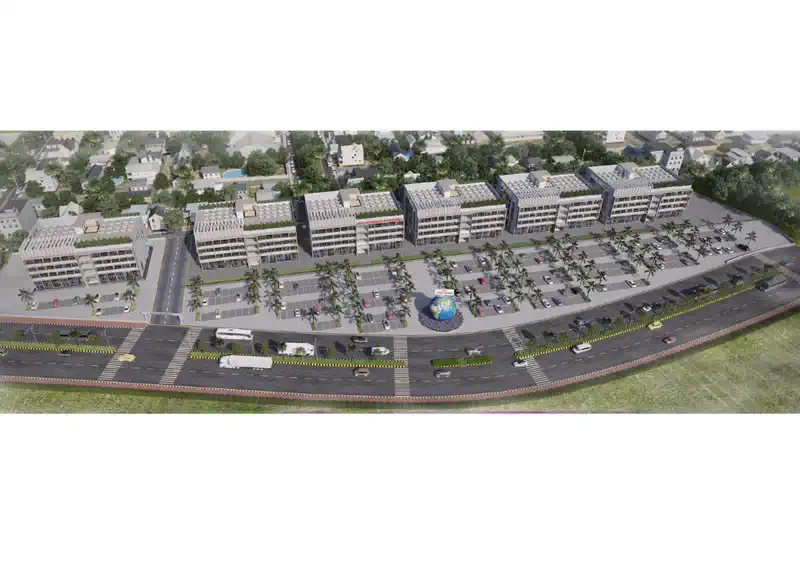Eastern India, known for its cultural richness and historical significance, is also witnessing a burgeoning trend towards sustainable living. As urbanization expands, there is a growing demand for neighborhoods that offer modern amenities while prioritizing eco-consciousness. Here, we explore five emerging neighborhoods in Eastern India that seamlessly blend sustainable practices with comfortable urban lifestyles.
1. New Town, Kolkata: Located in the northeastern fringes of Kolkata, New Town stands as a shining example of planned urban development with a focus on sustainability. Developed by the West Bengal Housing Infrastructure Development Corporation (WBHIDCO), this neighborhood integrates green spaces, energy-efficient buildings, and smart infrastructure. The area boasts of LEED-certified commercial complexes, rainwater harvesting systems, and extensive cycling tracks promoting eco-friendly commuting. With ample green cover and stringent waste management practices, New Town is transforming into a model eco-city.
2. Chandrasekharpur, Bhubaneswar: As the capital of Odisha undergoes rapid expansion, Chandrasekharpur emerges as a residential hub that champions eco-friendly living. Situated in close proximity to IT parks and educational institutions, Chandrasekharpur emphasizes sustainable architecture and urban planning. The neighborhood features energy-efficient housing complexes, solar-powered street lighting, and community gardens that promote organic farming. Initiatives like waste segregation at source and the promotion of electric vehicles contribute to its green credentials, making it an attractive choice for environmentally conscious residents.
3. Salt Lake City, Kolkata: Salt Lake City, popularly known as Bidhannagar, exemplifies a balance between modern urban amenities and ecological sustainability. This planned satellite township boasts of large green spaces, including the sprawling Central Park and Salt Lake Stadium complex. The neighborhood promotes water conservation through extensive rainwater harvesting systems and eco-friendly building certifications like IGBC (Indian Green Building Council). With dedicated bicycle lanes and efforts towards reducing carbon emissions, Salt Lake City encourages a healthy and sustainable lifestyle amidst its bustling urban environment.
4. Patia, Bhubaneswar: Patia, located in the northern outskirts of Bhubaneswar, is rapidly emerging as a favored destination for eco-conscious homebuyers. This suburb integrates residential, commercial, and educational institutions with a focus on sustainable development. Patia features green buildings with energy-efficient designs, LED street lighting powered by solar panels, and landscaped parks that enhance the neighborhood’s aesthetic appeal while promoting biodiversity. The community actively participates in waste management initiatives and promotes green commuting options, reinforcing its commitment to environmental stewardship.
5. Rajarhat, Kolkata: Rajarhat, situated on the eastern outskirts of Kolkata, is a rapidly growing township known for its eco-friendly urban planning and infrastructure. Developed as a satellite city, Rajarhat features LEED-certified residential complexes, green rooftops, and extensive tree plantations that mitigate air pollution. The neighborhood emphasizes sustainable transport with dedicated lanes for bicycles and electric vehicles, reducing dependency on conventional automobiles. Rajarhat’s commitment to eco-friendly initiatives, combined with its modern amenities and proximity to the airport, makes it a sought-after destination for sustainable urban living.
These five neighborhoods in Eastern India exemplify the region’s commitment to sustainable urban development. From energy-efficient buildings to green spaces and eco-friendly commuting options, each neighborhood offers a unique blend of modern amenities and environmental consciousness. As urban populations grow, the demand for such eco-friendly neighborhoods is expected to rise, paving the way for more sustainable communities across Eastern India.
Choosing to live in these emerging eco-friendly neighborhoods not only enhances the quality of life for residents but also contributes positively to the environment. With ongoing initiatives and innovative urban planning, Eastern India is poised to lead the way in sustainable living practices, setting a precedent for future urban developments nationwide.
(This article is authored by Shivani Priyam Patel, Director, Assotech Group.)





